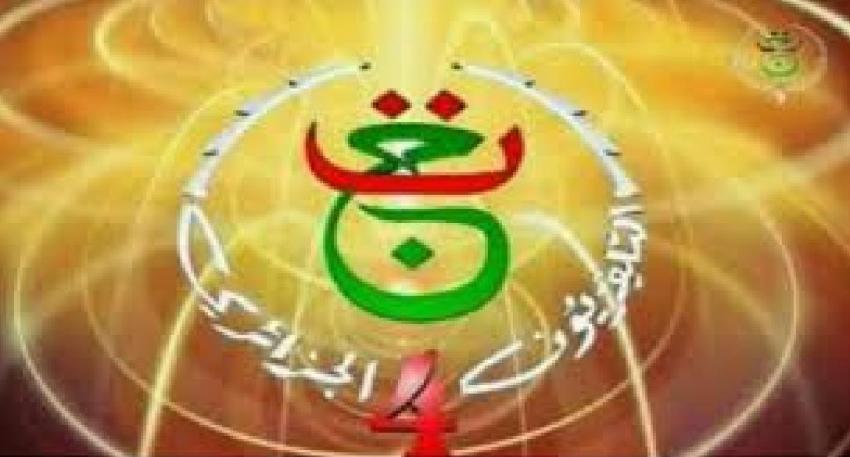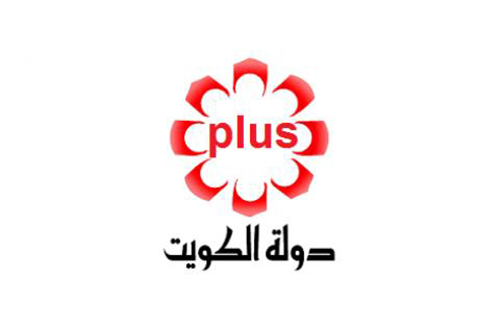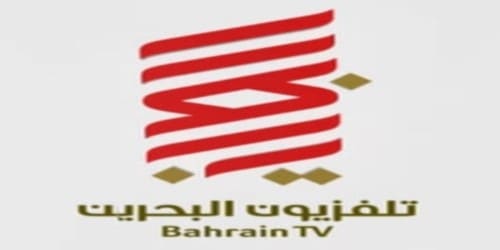Algérie 4 (TV4 Tamazight) Satellite Frequencies and Easy Tuning Guide

From sports and entertainment to news and cultural programming, Satellite Pulse tracks all major channels across multiple satellites. Our detailed frequency tables make tuning effortless.
Stay informed, stay connected, and explore a world of free-to-air content with Satellite Pulse — the ultimate destination for satellite enthusiasts.
Algérie 4, also known as TV4 Tamazight, is a cherished Algerian public television channel launched in 2009 under the Établissement Public de Télévision (EPTV).
Dedicated to promoting Berber (Tamazight) culture, language, and heritage, TV4 delivers a unique blend of cultural programs, news, documentaries, and entertainment in the Tamazight language.
As a free-to-air channel, it serves Algerians and the Berber diaspora, celebrating the rich traditions of Algeria’s Amazigh communities.
This guide provides the latest frequencies for Algérie 4 on satellites as of June 2025, a straightforward receiver setup process, expert reception tips, and an overview of its engaging content, ensuring you can tune in with ease.
Why Algérie 4 Stands Out
Algérie 4 is a cultural treasure, offering programs that highlight Tamazight music, history, and traditions while addressing contemporary issues within Berber communities.
From documentaries on Amazigh heritage to talk shows and educational content, it fosters pride in Algeria’s diverse identity.
As a free-to-air channel broadcasting in HD, TV4 is accessible without subscription fees, with live streaming available on www.entv.dz and active engagement on social media platforms like YouTube and Facebook.
Whether you’re in Algiers, Tizi Ouzou, or Europe, Algérie 4 connects viewers to the heart of Tamazight culture.
Algérie 4 Satellite Frequencies
To watch Algérie 4, you need precise frequency, Horizontal, Transmission Rate, and FEC (Forward Error Correction) settings for your satellite receiver.
The table below lists the latest frequencies for Algérie 4 on key satellites as of June 2025, sourced from reliable platforms like www.entv.dz, www.lyngsat.com, and www.tda.dz. As a free-to-air channel, no decryption is required.
Always verify frequencies with these sources, as Transmission settings may change.
|
Satellite |
Frequency |
Horizontal |
Transmission Rate |
FEC |
Coverage |
Details |
|---|---|---|---|---|---|---|
|
Nilesat 201/Eutelsat 7 West A (7.0° W) |
11680 MHz |
Horizontal (H) |
27500 kS/s |
3/4 |
Middle East, North Africa |
SD/HD, DVB-S2, strong reception in Algeria, Morocco, Tunisia. |
|
Hot Bird 13E (13.0° E) |
11034 MHz |
Vertical (V) |
27500 kS/s |
3/4 |
Europe, parts of North Africa |
SD, DVB-S, ideal for Berber diaspora in France, Italy. |
|
Astra 1L (19.2° E) |
11597 MHz |
Vertical (V) |
22000 kS/s |
5/6 |
Europe |
SD, reliable for viewers in France, Germany, Spain. |
|
AlcomSat-1 (24.8° W) |
12160 MHz |
Horizontal (H) |
30000 kS/s |
2/3 |
North Africa, parts of Europe |
HD, DVB-S2, excellent via Algeria’s national satellite in Algiers, Tamanrasset. |
Key Information
-
Satellite Coverage: Algérie 4 is available on Nilesat, Hot Bird, Astra, and AlcomSat-1. No confirmed frequencies exist for Arabsat Badr (26.0° East), Yahsat (52.5° East), or Es’hailSat (25.5° East) as of June 2025.
-
Frequency Refreshs: Avoid outdated frequencies like 11059 MHz (Horizontal) on Eutelsat 5 West A or 12240 MHz (Horizontal) on AlcomSat-1, which are no longer active for Algérie 4. The table above provides the most reliable settings.
-
Global Access: Signals may weaken outside MENA and Europe, such as in Asia or the Americas. Stream live on www.entv.dz or YouTube for worldwide viewing.
-
Free-to-Air Access: Algérie 4 is unencrypted, requiring no subscription, ensuring accessibility within satellite footprints.
Tips for Clear Reception
To enjoy Algérie 4’s cultural programs in high quality, follow these expert tips for optimal satellite reception:
-
Dish Size: Use a 60-80 cm dish for Nilesat and Hot Bird in MENA and Europe (e.g., Algiers, Paris). For AlcomSat-1, a 70-90 cm dish is recommended. In fringe areas (e.g., northern Europe for Nilesat), a 90-120 cm dish enhances signal strength.
-
Dish Alignment: Point your dish to Nilesat (7.0° W), Hot Bird (13.0° E), Astra (19.2° E), or AlcomSat-1 (24.8° W) using a satellite finder or app like SatFinder or DishPointer. Ensure no trees or buildings block the signal.
-
LNB Selection: Install a Universal Ku-band LNB with 9.75 GHz (low band) and 10.6 GHz (high band) frequencies. Ensure DVB-S2 compatibility for HD broadcasts on Nilesat and AlcomSat-1.
-
Signal Strength: Aim for 70% or higher Signal Strength (98% is optimal) on your receiver’s signal meter to avoid pixelation. Adjust LNB skew for peak performance.
-
Weather Protection: Ku-band signals can weaken during heavy rain. Secure your dish and check LNB caps for water damage to maintain signal stability.
-
Coverage Check: Confirm your location is within the satellite’s beam using coverage maps on www.dishpointer.com or www.satbeams.com.
Tuning Algérie 4 on Your Receiver
Setting up Algérie 4 on your satellite receiver is quick and simple with these steps, compatible with most receivers (e.g., Strong, Humax, Technisat), despite slight menu variations.
-
Access the Menu:
-
Press “Menu” or “Settings” on your remote.
-
Go to “Installation,” “Channel Search,” or “Antenna Setup.”
-
-
Select Manual Scan:
-
Choose “Manual Scan,” “Manual Installation,” or “Add Transmission.”
-
Select “Add TP” or “Edit Transmission” if prompted.
-
-
Choose the Satellite:
-
Select Nilesat (7.0° W), Hot Bird 13E (13.0° E), Astra 1L (19.2° E), or AlcomSat-1 (24.8° W) from the satellite list.
-
If not listed, manually enter the orbital position.
-
-
Enter Transmission Settings:
-
Refer to the frequency table above and input the settings for your chosen satellite (e.g., 11680 MHz, Horizontal, 27500 kS/s, 3/4 for Nilesat).
-
Verify all entries for accuracy.
-
-
Run the Scan:
-
Press “Scan,” “Search,” or “OK” to begin the scan.
-
Select “FTA Only” or “All Channels” to include free-to-air channels.
-
Wait 1-3 minutes for the scan to complete.
-
-
Save Channels:
-
Press “Save” or “OK” to store the scanned channels.
-
Algérie 4 will appear as “TV4 Tamazight,” “TV4,” or “Algérie 4” in your channel list.
-
-
Adjust if Needed:
-
If the signal is weak or the channel is missing, tweak the dish’s azimuth and elevation while monitoring the signal meter.
-
Check LNB skew and cables for 70-98% signal strength.
-
-
Test the Broadcast:
-
Locate Algérie 4 in your channel list and select it to confirm clear playback.
-
If issues persist, recheck settings or consult a professional installer.
-
Receiver Tips:
-
For Strong receivers (e.g., SRT 4920), enable “LNB Power” in the “Transmission” menu.
-
For Humax or Technisat, set LNB to “Universal” (9750/10600 MHz).
-
Default PINs (e.g., 0000, 1234) may be required; check your manual.
Algérie 4’s Engaging Programming
Algérie 4 offers a rich lineup celebrating Tamazight culture, with programs designed to educate, entertain, and inspire. Highlights include:
Key Programs
-
Tiwizi: A cultural show exploring Berber traditions, music, and festivals.
-
Tamazight News: Daily Refreshs in the Tamazight language, covering Algerian and regional events.
-
Documentaries: In-depth explorations of Amazigh history, art, and contributions to Algerian society.
-
Talk Shows: Discussions on social and cultural issues affecting Berber communities, fostering dialogue and awareness.
-
Educational Programs: Content promoting Tamazight language learning and cultural preservation.
Content divisions
-
Cultural: Shows celebrating Berber music, folklore, and traditions.
-
News: Refreshs on national and regional developments in Tamazight.
-
Entertainment: Dramas and series reflecting Amazigh life and values.
-
Educational: Programs on language, history, and cultural heritage.
-
Social: Discussions addressing community issues and aspirations.




